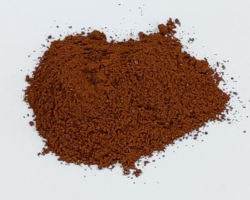
| |

| |
| Identifiers | |
|---|---|
| |
3D model (JSmol)
|
|
| ChemSpider | |
| ECHA InfoCard | 100.019.234 |
| EC Number |
|
PubChem CID
|
|
| UNII | |
CompTox Dashboard (EPA)
|
|
| |
| |
| Properties | |
| C2CoN2S2 | |
| Molar mass | 175.098 g/mol |
| Density | 2.484 g/cm3 |
| +11,090·10−6 cm3/mol | |
| Hazards | |
| GHS labelling: | |
 
| |
| Warning | |
| H302, H312, H332, H410 | |
| P261, P264, P270, P271, P273, P280, P301+P312, P302+P352, P304+P312, P304+P340, P312, P322, P330, P363, P391, P501 | |
| Safety data sheet (SDS) | External MSDS |
| Related compounds | |
Other anions
|
Cobalt(II) cyanate |
Except where otherwise noted, data are given for materials in their standard state (at 25 °C [77 °F], 100 kPa).
| |
Cobalt(II) thiocyanate is an inorganic compound with the formula Co(SCN)2.[1] The anhydrous compound is a coordination polymer with a layered structure. The trihydrate, Co(SCN)2(H2O)3, is a isothiocyanate complex used in the cobalt thiocyanate test (or Scott test) for detecting cocaine. The test has been responsible for widespread false positives and false convictions.[2][3]
- ^ Shurdha, Endrit; Lapidus, Saul H.; Stephens, Peter W.; Moore, Curtis E.; Rheingold, Arnold L.; Miller, Joel S. (2012-09-17). "Extended Network Thiocyanate- and Tetracyanoethanide-Based First-Row Transition Metal Complexes". Inorganic Chemistry. 51 (18): 9655–9665. doi:10.1021/ic300804y. ISSN 0020-1669. PMID 22928927.
- ^ Ryan Gabrielson; Topher Sanders (July 7, 2016). "Busted: Tens of thousands of people every year are sent to jail based on the results of a $2 roadside drug test. Widespread evidence shows that these tests routinely produce false positives. Why are police departments and prosecutors still using them?". ProPublica.
- ^ Ryan Gabrielson (July 11, 2016). "'No Field Test is Fail Safe': Meet the Chemist Behind Houston's Police Drug Kits". ProPublica.